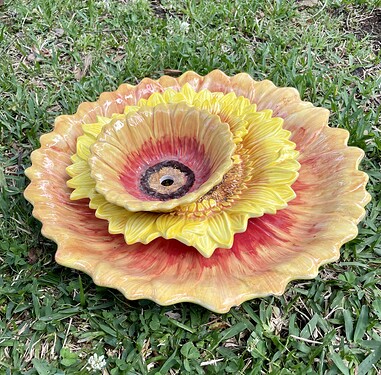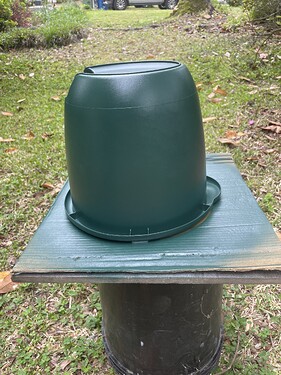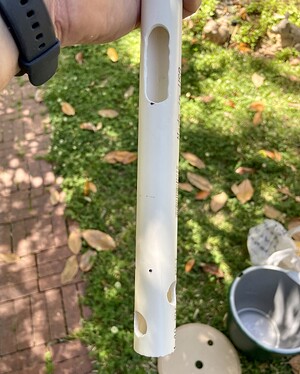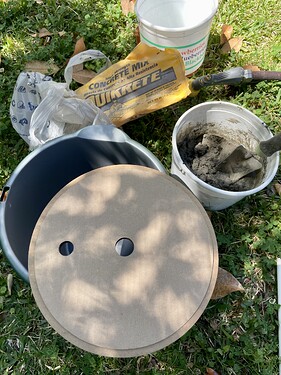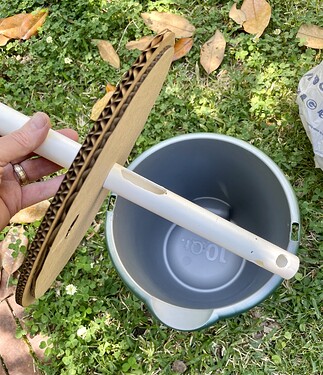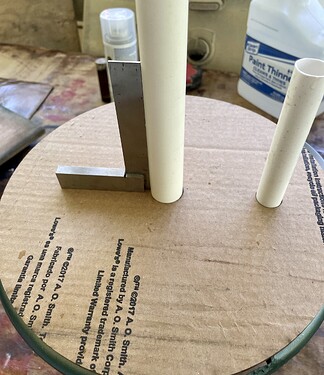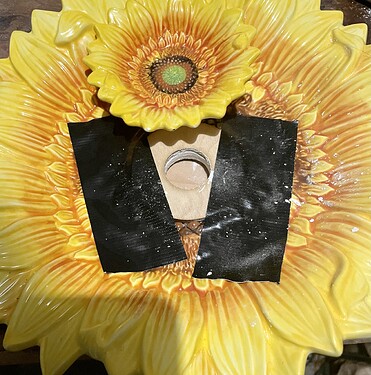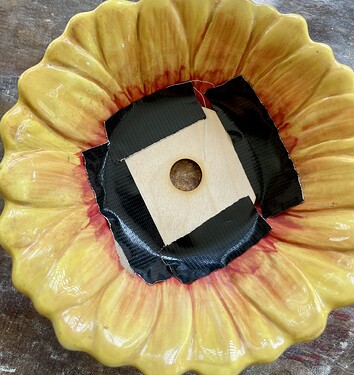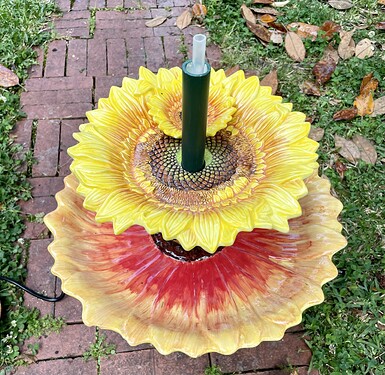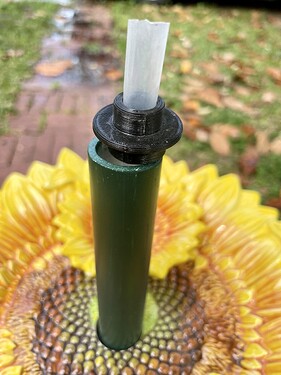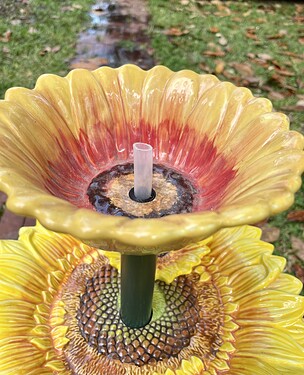I’m not a huge fan of garden water fountains, mainly because I have to maintain them, but my wife likes them so I do them.
Over the years we’ve had a number of different fountains. Some homemade, some store bought. The wife decided it was time for a new one and gave me 3 ceramic sunflower plates we haven’t used in a long time. She said she wanted to use these to make a new fountain. Challenge accepted
Biggest plate is about 16 inches in diameter. The general idea I had was to have a bucket base and a stem that run up the center of the plates. Water would go up the stem and cascade down from the top and back into the bucket
Found a cheap 10 quart bucket at Walmart that was somewhat flower pot shaped. Cut off the handle flush with the rim and painted it green.
The stem was made from 3/4" schedule 40 pcv pipe. The pipe was going to be anchored into the bucket with some cement, so some large holes were drilled into the bottom end to allow the concrete in. A slot was also cut into the pipe to allow tubing from the water pump to run up the inside.
Quickrete makes a 10 lb bag of cement which is great for small projects like this. I used about 7 lbs to give me about a 2.5" thick base.
To center the pipe, and have it perpendicular to the bottom of the bucket, I Iaser cut a positioning jig from 2 layers of flat cardboard. The bottom layer fit just inside the bucket top and the top layer was the size of the outside diameter of the bucket top edge. Glued together with some spray glue.
(Note there is a secondary pipe which is going to hold some mini float switches for an auto refill feature I will be adding later.)
Used a small machinist square to make sure the pipe was straight up and down. Let the concrete cure for a few days
In order to drill holes in the ceramic plates I order a set of inexpensive diamond coated hole saws from Amazon.
To get accurate placement of the holes I laser cut some positioning jigs from 1/8" ply and tacked them in place with some duct tape. Placed a small piece of wood under the hole plate to help prevent too much blow out as the hole saw came though the back of the plate.
The 3/4" SCH 40 pvc pipe has an outside diameter of about 26.7mm. The closest hole saw in the set above that was the 28mm saw, which was fine since I didn’t care about a tight fit.
Drilled the bottom and middle plate with the 28mm saw.
I was only planning to run the tubing and a 3D printed coupler through the top plate, so I used a 16mm saw for the top.
To support the bottom and top plates on the stem, I 3D printed some collars from PETG. Included a space on the inside edge for a recessed stainless steel nut and set screw (M3).
Using a 158 gal/hr rated pump that has an adjustable flow rate. This is a good size pump for most small fountains. You can get one pretty cheap at Harbor Freight. Ran a piece of 3/8" silicone tubing up the stem and connected to the pump at the bottom.
Drilled some 10mm holes in the bottom plate, close to the center, to allow water to drain back into the bucket. Laser cut another positioning jig for this as well.
3D printed a coupler for the top plate that fit into the stem pipe and was sized to allow the inner tubing pipe to come through. Also adjusted the outside diameter of the top of the coupler to be a tight fit to the hole I had drilled.
Turned out really nice.
It has a small amount of splash out, which isn’t ideal, so I’ll have to keep an eye on it until the parts for the auto refill come in from AliExpress. I’ll also use an algicide to keep down on algae growth.
